Why Your Car Paint Fades and How to Address the Problem
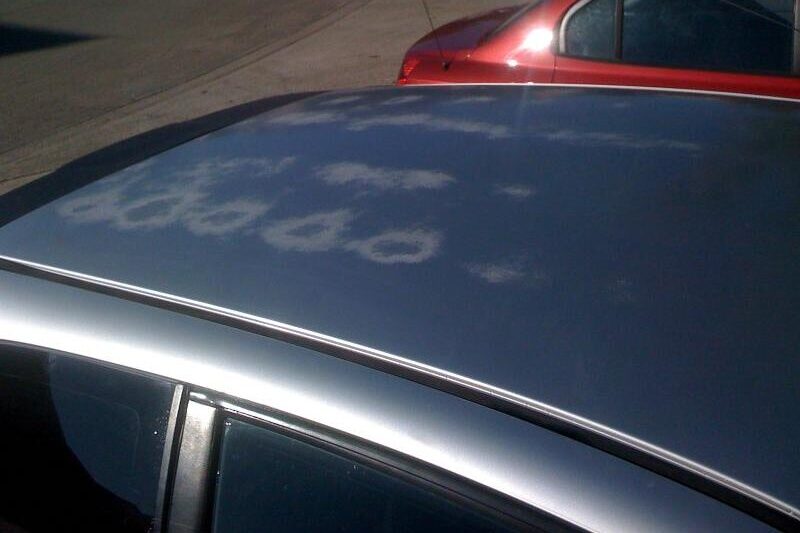
Sure, we can all agree that faded car paint is ugly to look at. It can make you second guess driving your car around simply for the sheer embarrassment you may get out of it. However, some people believe it to be dangerous as well. Many believe that faded car paints release fumes that can lead to inflammation, rashes, and the like. While this “danger” part of faded car paint is still heavily debated today, the fact of the matter is that you do not want to deal with faded car paint on your car. But of course, why does your car’s paint fade, and what can be done to stop the process? Here’s what you need to know: Why Does My Car’s Paint Fade? If you notice that your car’s paint is beginning to fade, there are a few possible causes. Here are four of the most common: 1. Sun Exposure One of the most common causes of fading car paint is sun exposure. Over time, the ultraviolet (UV) rays from the sun can break down the paint, causing it to lose its colour and gloss. This is especially true if your car is parked in direct sunlight for long periods of time. 2.Weather Conditions Certain weather conditions can also cause your car’s paint to fade. For example, if you live in an area with a lot of rain, the paint can start to fade due to the water and humidity. Snow and ice can also damage the paint, as can sand and dust storms. 3.Pollution Pollution can also cause the paint on your car to fade. The chemicals in the air can break down the paint, causing it to lose its colour and gloss. 4.Poor Maintenance If you don’t properly maintain your car’s paint, it can also start to fade. For example, if you don’t wax your car regularly, the paint can become dull and faded. How Do I Protect My Car’s Paint from Fading? As we’ve said, the sun’s ultraviolet (UV) rays can damage the paint on your car, causing it to fade, become dull, and even crack over time. But there are ways to protect your car’s paint from the sun’s harmful rays. One way to protect your car’s paint is to park in a garage or under a carport whenever possible. If you can’t park in a garage or under a carport, try to park in the shade whenever possible. Another way to protect your car’s paint is to use a car cover. A car cover will help to keep the sun off of your car’s paint and will also help to protect it from other environmental factors, such as dust, dirt, and bird droppings. You can also use a product called a UV protectant on your car’s paint. UV protectants are applied to the paint and act as a barrier to the sun’s UV rays. There are many different brands and types of UV protectants available, so be sure to read the labels carefully to choose the one that is right for your car’s paint. Finally, be sure to wash and wax your car regularly. This will help to create a barrier against the sun’s UV rays and will also help to keep your car’s paint looking shiny and new! Conclusion Driving a car with its paint faded is never a fun thing, especially if you’re quite self-aware about it. Fortunately, you don’t have to deal with this problem if you know how to treat your car right! Follow the tips we’ve shared above to make sure your car’s paint lasts. And, if your car’s paint has already faded, send it over to a paint shop to give your car a brand-new look it deserves! Lucky 13 is an expert in auto body repair and custom paint services, helping customers enjoy reliable services that meet and even exceed expectations. If you are looking for auto body painting in Edmonton, get in touch with us today!
Why Rustproofing Your Car in Canada is Such a Good Idea
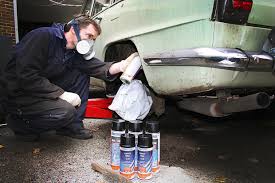
Rustproofing your car is an important consideration for any driver in Canada. With our harsh winters and road salt, rust can quickly become a problem for your car. Rustproofing helps to protect your car from the elements and can extend its life. Rustproofing your car is worth it in Canada. It will help to protect your car from the elements and extend its life. Here are a few things about car rustproofing you should know about. What is Car Rustproofing? Rustproofing is the process of treating the metal on your car to prevent corrosion. This is usually done with a spray or gel that is applied to the metal surfaces on your car. The spray or gel forms a barrier between the metal and the elements, preventing water and salt from coming into contact with the metal and causing corrosion. What are the Benefits of Rustproofing Your Car? There are several benefits to rustproofing your car, including: How to Prevent Rust on Your Car There are a few things that you can do to prevent rust on your car. Some of these things include: Conclusion Rustproofing your car is definitely worth it in Canada. The weather conditions here are perfect for rusting and can cause a lot of damage to your car if you don’t take the necessary precautions. Rustproofing will protect your car from the elements and help it last longer. Lucky 13 is an Edmonton auto body paint shop that provides expert-quality auto body repair and custom paint services. Get a quote today for your auto paint needs.
Why It’s A Poor Idea To Undertake Your Car Restoration
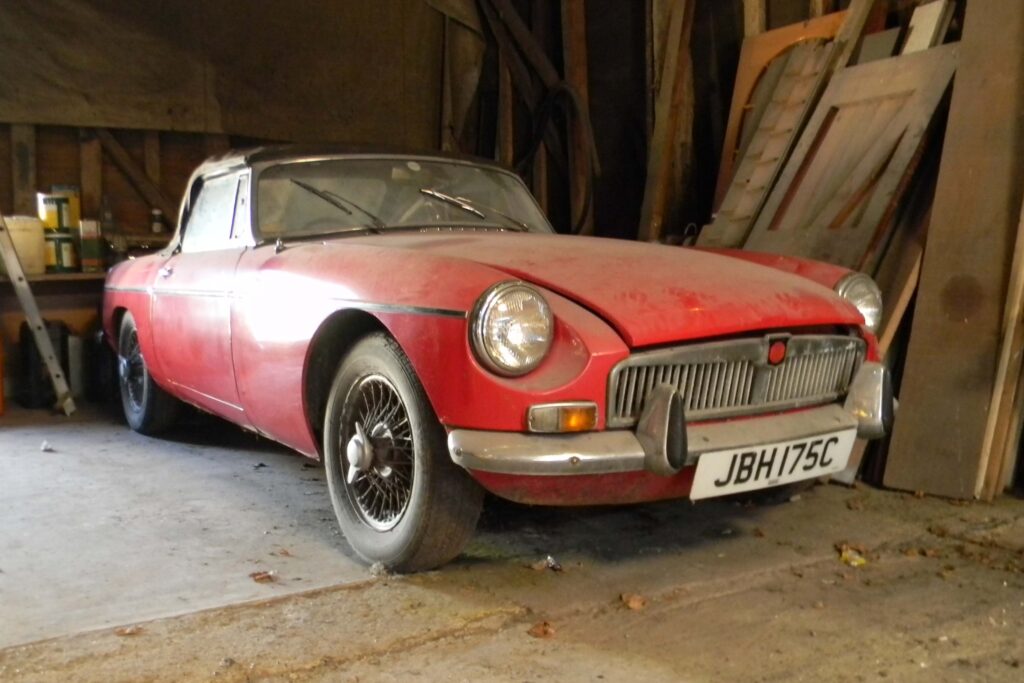
Doing a vehicle auto body restoration on your own might not be a good option because even a tiny mistake might cost you more than you expected and require you to extend the time of your task. Whether you drive a vintage, antique, or classic car, the repair process could take some time. There is no reason for you to make it any more time-consuming or challenging than it currently is. Profitability-wise, the auto restoration industry has also achieved significant success. The restoration sector generated retail parts sales of $1.4 billion in 2014, according to the Specialty Equipment Market Association (excluding the additional $1.3 billion in labour and installation costs). Despite how appealing it may sound, performing a DIY car restoration is not a smart choice for the following reasons: You’ll Make a Sizeable Investment Like any major job, one of the most vital steps you should do before beginning a car repair is establishing a budget. Never should you be required to provide more than you intended to—not twice, not three times, not even five times—to this cause. Set a limit and make every effort to stay inside it. You Estimated It Would Take Longer Than It Would An automobile typically needs more than a week or two to restore fully. This approach requires some instruments and patience, as it frequently requires hundreds of hours. You’ll undoubtedly have dirty hands throughout a restoration, so be ready for that. Probably Not As Much Fun As You Anticipated While restoring an automobile may have fun moments, you will eventually realise that it is a difficult task involving many steps and the skill to pay attention to detail. This pertains to the previous statement. Finding the correct balance between labour and leisure is crucial when working on car restoration. You Might Not Have The Required Tools A dual-action sander, MIG welder, hammer, and wrenches are required to complete this task successfully. However, a restored antique car must adhere to all applicable laws and regulations if you want to drive it. You might need to use state-of-the-art equipment or materials created specifically to finish them. You may need to hire a mechanic from time to time to make sure your car is safe. It’s possible that you don’t fully understand the difference between aftermarket and OEM parts. Both antique and contemporary cars can be repaired and restored using OEM (original equipment manufacturer) parts or aftermarket replacement parts produced by other manufacturers. Both types of parts have benefits and drawbacks regarding their costs and the technologies they incorporate. Some of these components can be changed, but not all of them. Thus, it is essential to comprehend precisely what distinguishes one type of portion from another. Contact A Reliable Auto Restoration Business Learn more from the experts about the advantages of working with a pro when choosing to handle a car repair. Make sure to visit an auto body shop in Edmonton that dealt with a wide range of automobiles in the past, such as classic, antique, vintage, and muscle cars. A frame alignment is always the first step in our repair process to ensure that your car can move easily on the road. We also provide bespoke paint jobs, corrosion restoration, and four distinct types of engine swaps. Conclusion While trying to restore your car yourself may be tempting, it is generally not worth the time, effort and money. Unless you are an experienced mechanic, you are likely to run into problems that will cost you more to fix than if you had taken it to a professional in the first place. In addition, the value of your car is unlikely to increase as a result of your restoration, even as simple as car paint restoration Edmonton work, as you may not do it properly and only damage your car further. Lucky 13 are experts in bespoke painting and auto body work. We are committed to offering our clients high-calibre work, dependable support, and reasonable costs. Come see us for a vehicle auto body restoration!
Why Auto Body Paint Fades & Tips on Preventing Them
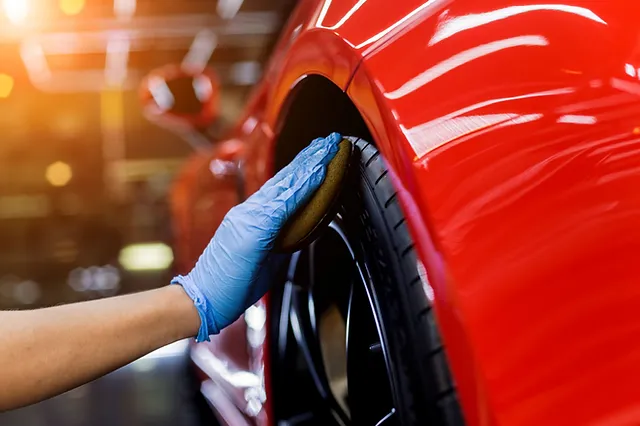
Auto body paint can fade for a number of reasons, including exposure to the sun, weather, and chemicals. Here are seven of the most common reasons why your paint may be fading: Sun Exposure One of the most common reasons for the paint to fade is sun exposure. Ultraviolet (UV) rays from the sun can break down the molecules in the paint, causing it to lose its colour and become dull. Weather Conditions Certain weather conditions can also cause paint to fade. For example, paint can fade more quickly in areas with high humidity or extreme temperatures. Chemical Exposure Exposure to certain chemicals can also cause paint to fade. For example, the paint may fade if it comes into contact with gasoline, oil, or other automotive fluids. Poor Quality Paint If the paint used on your car is of poor quality, it will be more likely to fade. Cheap, low-quality paint is more likely to contain pigments that are not as resistant to UV rays and other environmental factors. Poor Painting Technique If the paint job was not done properly, it is also more likely to fade. For example, if the paint was not properly mixed or applied, it will be more likely to fade. Lack of Clear Coat If your car does not have a clear coat, the paint will be more susceptible to fading. The clear coat protects the paint from UV rays and other environmental factors. Improper Maintenance If you do not properly maintain your car’s paint, it will more likely to fade. For example, if you do not regularly wash and wax your car, the paint will be more likely to fade. How to Prevent Auto Body Paint From Fading To prevent your car’s paint from fading, you should take the following steps: Keep Your Car in the Garage If you have a garage, you should park your car in it. This will protect the paint from exposure to the sun and other environmental factors. Use a Car Cover If you don’t have a garage, you should use a car cover when you park your car. This will also protect the paint from exposure to the sun and other environmental factors. Clean Your Car Regularly You should wash your car regularly to remove dirt, dust, and other contaminants that can damage the paint. You should also wax your car regularly to protect the paint from UV rays and other environmental factors. Use a High-Quality Car Wax You should use high-quality car wax to protect the paint from UV rays and other environmental factors. Use a Clear Coat If your car does not have a clear coat, you should apply one. The clear coat will protect the paint from UV rays and other environmental factors. Get Your Car Detailed Regularly You should get your car detailed regularly to remove contaminants that can damage the paint. Conclusion There are several reasons why auto body paint may fade over time. The most common reason is exposure to the sun, which can cause the paint to become dull and discoloured. Other factors that can contribute to fading paint include exposure to chemicals and pollutants, and even simple wear and tear. If you want to keep your car’s paint looking its best, it’s important to regularly wash and wax it and to avoid exposing it to harsh conditions whenever possible. If you are looking for a garage that does top-notch auto paint restoration, you will not be disappointed if you hand in your vehicle to Lucky 13. We will restore your car to its former glory, so take your vehicle to us now!
What You Need to Do to Fix the Rust on Your Vehicle
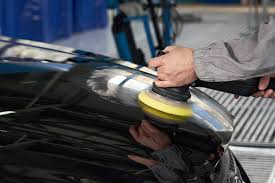
Car rust is probably one of the most common and damaging problems affecting your vehicle. Rust can form on your car’s body, frame, and undercarriage, and if left untreated, it can cause serious structural damage. Rust occurs when the car metal comes into contact with water and oxygen, and the resulting chemical reaction causes the metal to weaken and break down. The most common cause of car rust is road salt, which is used to melt ice and snow on roads and highways. If you notice any rust on your vehicle, it’s vital to repair it as soon as possible. Mask Around the Rusted Area If you have some rust on your car, there’s no need to panic. While it may seem like a daunting task, there are ways to fix rust and prevent it from spreading. The first step is to mask around the rusted area. This will ensure that the rust doesn’t spread to other parts of the car. You’ll need to use masking tape that is at least two inches wide. Apply the tape to the car, making sure to overlap the edges of the rust spot. Once the rust spot is fully covered, you can begin the repair process. Sand Down the Rust One way to remove rust is to sand it down. This can be done with a variety of tools, including a sanding block, sandpaper, or a power sander. Start with coarse grit sandpaper and work your way up to a finer grit. Be sure to sand in the direction of the grain to avoid damaging the metal. Apply a Rust Inhibitor Applying a rust inhibitor is one way to help prevent further rusting and extend the life of your vehicle. There are a few different types of rust inhibitors on the market, so it’s important to choose a rust inhibitor that is compatible with the type of metal on your vehicle. Some rust inhibitors are designed for use on ferrous metals, while others can be used on both ferrous and non-ferrous metals. Once you’ve selected the right rust inhibitor, the application process is relatively simple. Most rust inhibitors come in aerosol cans, so you’ll just need to spray the affected areas. Be sure to apply the rust inhibitor evenly and in a well-ventilated area. After the rust inhibitor has been applied, you’ll need to wait for it to dry completely before driving or using your vehicle. Once it’s dry, the rust inhibitor will create a barrier that will help prevent rust from forming in the future. Apply a Top Coat After applying a rust inhibitor, you can further prevent rust by applying a top coat. This is a type of paint that is specifically designed to protect against rust. It can be applied over the existing paint job, and it will help to seal the existing paint and prevent new rust from forming. Top coats can be found at most auto parts stores, and they are relatively easy to apply. Just be sure to follow the instructions on the label carefully. Final Thoughts Rust on your vehicle is not something to be taken lightly. Car rust can cause extensive damage to your vehicle and is very difficult to remove once it sets in. If you notice rust on your car, it’s important to take action immediately to prevent it from spreading. Fix the rust on your car with the help of Lucky 13. We are an autobody shop in Edmonton that is dedicated to providing our customers with quality workmanship, trusted service, and competitive pricing. Quality control is part of our mission, and we stand behind our work with a 100 percent guarantee. Get a free quote now!
What Should You Do If Your Car’s Paint Is Damaged_
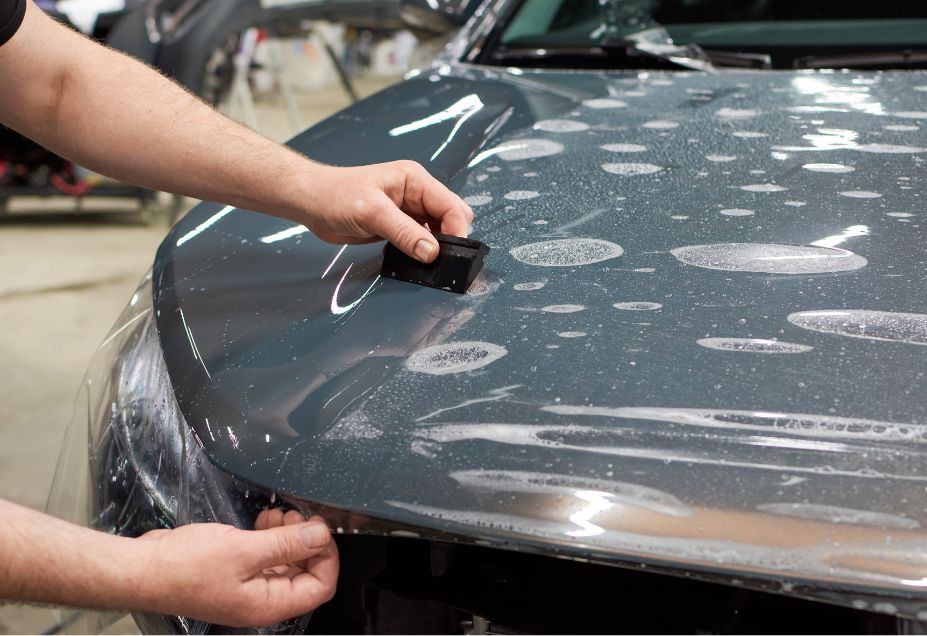
A car is one of a person’s most valuable items, but it’s not perfect. Many things can go wrong with a vehicle, ranging from minor issues to major problems that require expensive repairs. One such problem is when the paint on your car gets damaged. A car’s paint is one of its most important features, as it helps protect the vehicle from damage and gives it a sleek appearance. Here are some reasons why car paint can be damaged and what you should do if you find yourself in this situation. Scratch A scratch is a mark made by contact with another object or surface. These marks can be shallow or deep, depending on how hard they were hit and how sharp their edges are. They can be challenging to repair because they often cause tiny cracks in the paint layer underneath them. These cracks will eventually spread out and cause larger problems later on if they aren’t taken care of quickly enough. Chips Chips are small scratches in your car’s paint job that are too big to fill with compound but not big enough to qualify as a dent. Chips can be removed by sanding down the area around the chip until you reach bare metal, then repainting that area so that it blends in seamlessly with the rest of your car’s paint job. Paint Fade If you live in a sunny area or drive in bright sunlight, you may notice your car’s paint fading. This is caused by UV damage. Fading can be prevented by applying a coat of wax to your car every few months and ensuring it’s clean and dry after washing it. Rust Rust occurs when moisture gets into small cracks in the metal of your car and causes oxidation of the metal underneath the surface of the paint job. In many cases, this means that only a small portion of the exterior needs to be stripped down and repainted — likely just the affected area closest to where moisture has gotten inside the vehicle’s body. You can prevent this by washing your car regularly, using a spray wax rather than a liquid wax, and drying the vehicle thoroughly after washing it. Dents Collisions with other vehicles, objects or people cause dents. While it’s impossible to avoid dents completely, several ways exist to repair them. The first step is to remove any loose paint from the area around the dent and use an adhesive remover to dissolve any remaining adhesive from previous repairs on the car. Next, you can pull out small dents with a suction tool that uses vacuum pressure to pull them out of place. For larger dents, you may need to fill in areas where the filler has been removed before repainting your vehicle.Once the dent is out of your vehicle’s body, you can fill in any remaining holes with a filler compound. Sand down the area to make it even and smooth before applying primer and paint to match your car’s original colour. If you don’t want to repaint your entire car, consider spot-painting instead. Conclusion You’ve probably noticed that car paint can be damaged in many ways. Whether it’s a minor scratch or a major dent, the problem can be frustrating. If you find yourself dealing with this type of issue, there are a few steps you should take to ensure that your vehicle is repaired properly and that it doesn’t happen again. For auto paint restoration in Edmonton, contact the professionals at Lucky 13. We’re here to help you, so give us a call today! We offer various services, including auto paint restoration, touch-ups and more.
What Is a Car Paint Restoration and When Do You Need It
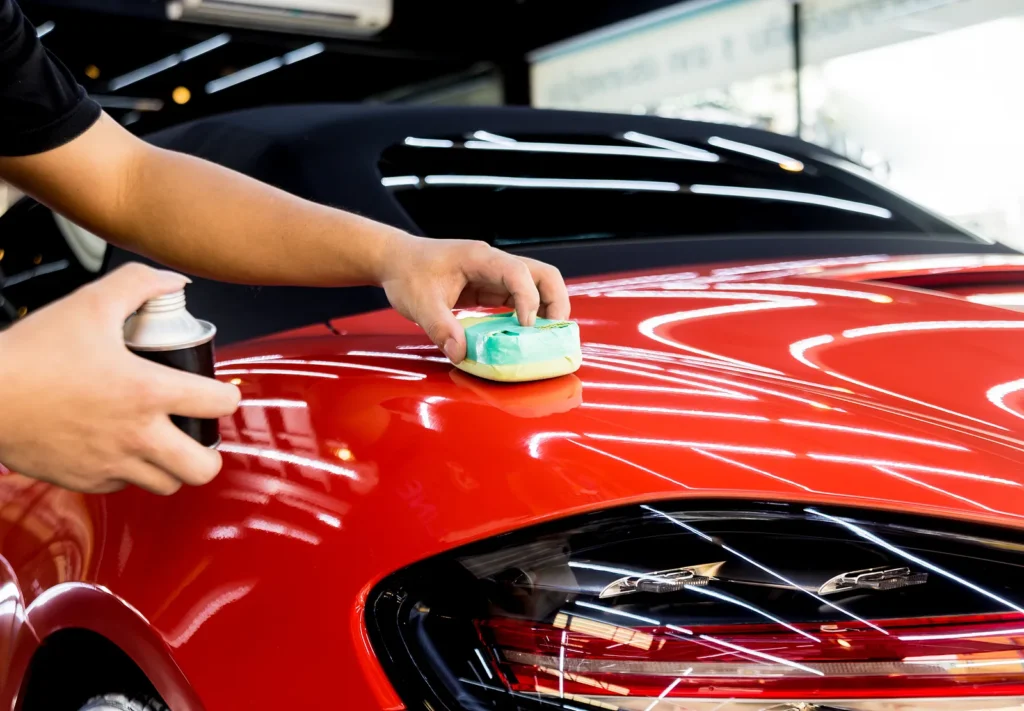
A car paint restoration is a process of repairing and/or improving the paint job on a car. There are several ways to go about car paint restoration, including polishing, waxing, and using a paint sealant. But the best method will vary depending on the extent of the damage and the budget you have to work with. Depending on the severity of the damage, a paint restoration may involve sanding, polishing, and/or repainting the car. For minor damage, such as scratches or small chips, polishing and/or waxing may be all that’s needed. Repainting may be the best option for more extensive damage, such as fading or peeling. When Do You Need a Car Paint Restoration When your car paint shows signs of wear and tear, it may be time to consider a car paint restoration. Over time, your car’s paint can become dull, faded, and chipped, affecting its overall appearance and value. A car paint restoration can help to revitalize your car’s paint and make it look new again. There are a few different factors to consider when deciding whether or not a car paint restoration is right for you. Overall Condition of Your Car If your car is only mildly faded or chipped, a simple polishing and waxing may be all that is needed to restore its shine. However, if the paint is severely damaged, a more extensive restoration may be necessary. Cost of Restoration A simple polishing and waxing job can be done relatively cheaply, while a more extensive restoration can be quite costly. It is essential to weigh the restoration cost against your car’s value. Personal Preference If you simply want your car to look its best, a car paint restoration may be the right choice. However, if you are more concerned with the value of your car, you may want to consider other options, such as selling it and buying a new one. How to Prepare Your Car Before Car Paint Restoration If you are considering a car paint restoration, you can do a few things to prepare for it. Wash and Wax Your Car: Washing and waxing your car can help remove any dirt and grime that might potentially damage the paint during the restoration process. Remove Loose Paint: Removing loose paint or debris from your car’s surface can help ensure that the restoration process goes smoothly and that your car’s paint is not damaged further. Choose a Reputable Company: If you are considering car paint restoration, it is essential to find a reputable and experienced professional to perform the work. A car paint restoration is a delicate process, and it is important to entrust it to someone who knows what they are doing. What Are the Benefits of a Car Paint Restoration There are several benefits to having a car paint restoration performed on your vehicle. Protect From Damage Over time, exposure to the sun and other elements can cause your car’s paint to fade and become dull. A car paint restoration can help to protect your car’s paint from further damage. Restore Original Showroom Condition A car paint restoration can help to reverse this process and restore the original colour and shine to your vehicle’s paint. Improve Your Vehicle’s Value A car paint restoration can also help improve your vehicle’s value. If you plan on selling your car or simply want to maintain its value, a car paint restoration can be a great investment. Keep Your Car Looking Its Best Finally, a car paint restoration can simply make your car look better. Whether driving or showing it off to your friends, a clean and shiny car will always turn heads. Conclusion A car paint restoration is a process that can help to restore the original lustre and shine to your vehicle’s paint. While some people may think that a car paint restoration is only necessary when the paint is damaged, it can actually be a good idea even if the paint is in good condition. This is because restoration can help to preserve the paint and make it look its best for years to come. If you are looking for a professional car paint restoration service in Edmonton, then Lucky 13 is the right choice for you. We use various methods to restore car paint, including sanding, buffing, and polishing. We also offer a wide range of finishes, including gloss, matte, and satin. Let us restore your car’s paint to its original condition. Contact us to get started!
What Causes Sun Damage to Car Paint and How to Prevent It
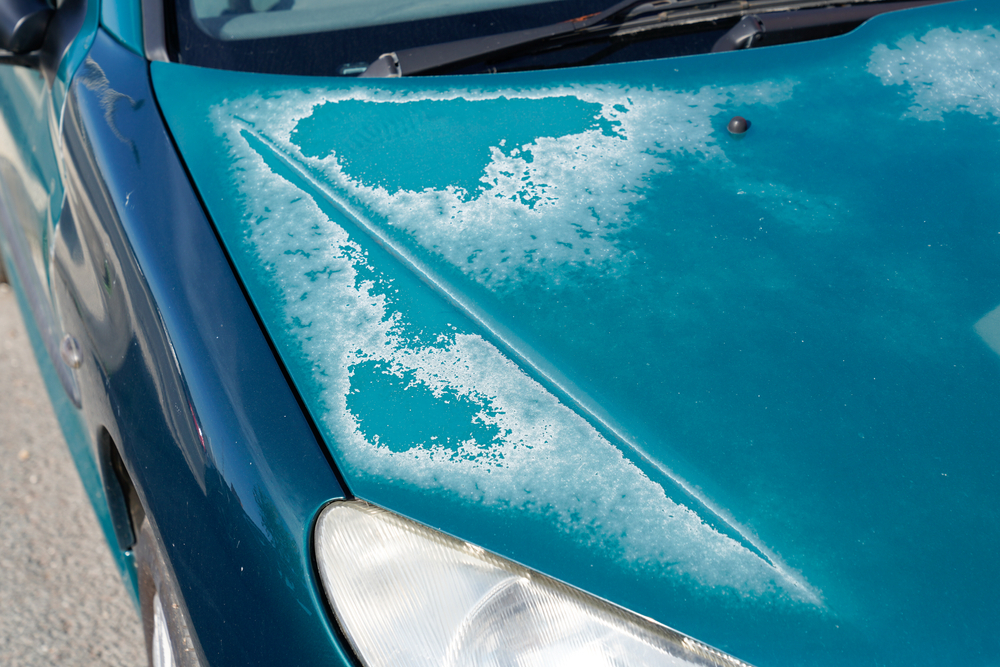
The sun’s rays can benefit some, but they can be a huge detriment to vehicle owners. The intense ultraviolet radiation from the sun can be detrimental to our cars, resulting in fading and damage to the paint. This is a problem that car owners must deal with all over the world. As such, it is important to protect your vehicle’s paint, plastic trim, headlights, and other components from the sun’s harmful rays. In this article, we will explore how you can protect your car from the damaging effects of the sun. Read on. How Sun Damage Occurs Ultraviolet (UV) light is an invisible form of light with a wavelength measuring between 10 and 400 nanometers, shorter than what is visible to the human eye and longer than X-rays. It is a type of energy present in natural sunlight and makes up about 10 percent of the sun’s total electromagnetic radiation. UV light is very powerful and can have a range of effects on living things. The sun’s ultraviolet radiation can cause damage to car paint, diminishing its protective qualities and leading to fading, cracking, and other deterioration. This can make the car look old and worn out and reduce its resale value. Over time, the molecules in automotive paints, clear coats, and other materials are broken down by UV light, resulting in the loss of their original brightness and color. This phenomenon, called the dulling effect, affects automotive paints, plastic trims, headlights, glass, tires, and wheels. Automotive paint colors will absorb all the colors in the spectrum except the one they are designed to appear as. This, unfortunately, makes them more susceptible to damage from ultraviolet rays, which are also part of the spectrum. Common Causes of Sun Damage on Your Car Accumulated Dirt When a car is not regularly cleaned, dirt, dust, and other contaminants accumulate on the surface, causing damage to the paint and clear coat. This damage can be seen as a loss of shine and color, fading, and increased vulnerability to UV light. Regular cleaning will help preserve the car’s appearance and protect it against further damage. Organic Wastes Bird droppings, tree sap, and bug remnants can all contain high levels of acidic components that can cause rapid deterioration of car paint and other surfaces. Uric acid, which is especially abundant in bird feces, can start to break down clear coat paint in a short amount of time. Salt Salt is a type of contaminant that can make it easier for UV light to damage car parts. It can quickly get through protective surfaces like car wax, transparent coatings, or paint sealants. Conclusion Protecting car paint from sun damage is essential to maintain the look and health of a vehicle. Parking in the shade or using a sunshade when possible is important. It is also important to regularly clean the car and wax it at least twice a year. Additionally, a paint sealant can help protect the paint from UV rays and other elements. Taking these steps can help ensure that your car will look good for many years to come. If you are looking for an auto body paint shop in Edmonton, choose Lucky 13. We take pride in being experts in auto body repair and custom paint services. We are dedicated to providing our customers with quality workmanship, trusted service, and competitive pricing. Get a free quote!
Types of Rust and How to Deal WIth Them
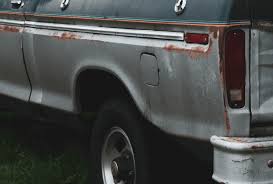
Rust can ruin a car if you don’t get it fixed. Rust eats away at the paint and metal of your vehicle. The car gets weaker and is more susceptible to accidents if left untreated. It can also affect the vehicle’s appearance, which can then affect its resale value. If you know what signs lead to rust, you can avoid worse problems that might occur. If your car has rust, you’re probably not happy about it. Rust is just one of the many problems car owners might have to deal with at one point or another. Learning about and understanding the different types of rust can help you form a plan to deal with each type. Here, Lucky 13’s experts in car paint repairs will discuss the types of rust and how they form: Types of Rust Surface Rust Rust that forms underneath a car or a car part is referred to as surface rust. Surface rust is easy to spot because it is easily identifiable. Surface rust is red and can be felt by running your hand across it. Surface rust can be easily removed using a wire brush. You should use a wire brush instead of a steel brush because the latter can scratch the paint on your car. Alternatively, you can use sandpaper to remove any visible rust and apply rust-proof paint to protect the area from future rusting. Scale Rust Scale rust forms when the car has been submerged in water for too long. Scale rust can be identified by its white and flaky appearance. Scrubbing a piece of scale rust can make the rust on the car look like a piece of rock. Scale rust is not easily removed, but you can try using a wire brush, sandpaper, and rust-proof paint to remove scale rust. It is better to take it to your trusted shop to get the job done, though, as experts would know more efficient techniques to remove scale rust. Galvanic Corrosion Galvanic corrosion is rust that starts from a less-noble metal and attacks a more noble metal. This type of rust includes rust that starts from steel and attacks aluminum. This type of rust can ruin your paint job just as easily as it can rust your chassis. Galvanic corrosion can be identified by its sharp, jagged edges and the fact that it only points upward, away from the more noble metal. To address this type of rust, the best thing to do is to get a pro’s help removing all traces of rust from the car. Then they can apply rust-proof paint to protect the area. How to Prevent Rust The best way to prevent rust from forming is to dry your car completely. If you park in a humid area, make sure to dry the vehicle well by using a towel and a hair dryer. Never use a high-pressure hose because it can damage your paint job. You can also protect your car from rust by using anti-corrosion paints and waxes. These paints and waxes will help protect your vehicle from rust. You can buy anti-corrosion paints and waxes from most automotive shops. Conclusion It is essential to know what kind of rust problem you have to help you treat it properly. Rust can damage your paint job and affect your car’s overall appearance. Thus, it’s a good idea to take preventive measures to prevent rust from forming in the first place. Also, at the first sight of rust, take your vehicle immediately to an expert in car paint repairs who would know how to handle this problem. Lucky 13 offers car rust repair in Edmonton, along with a plethora of other car services. Schedule your appointment with our auto body repair pros now!
Three Reasons Why Car Paint Fades – What to Know
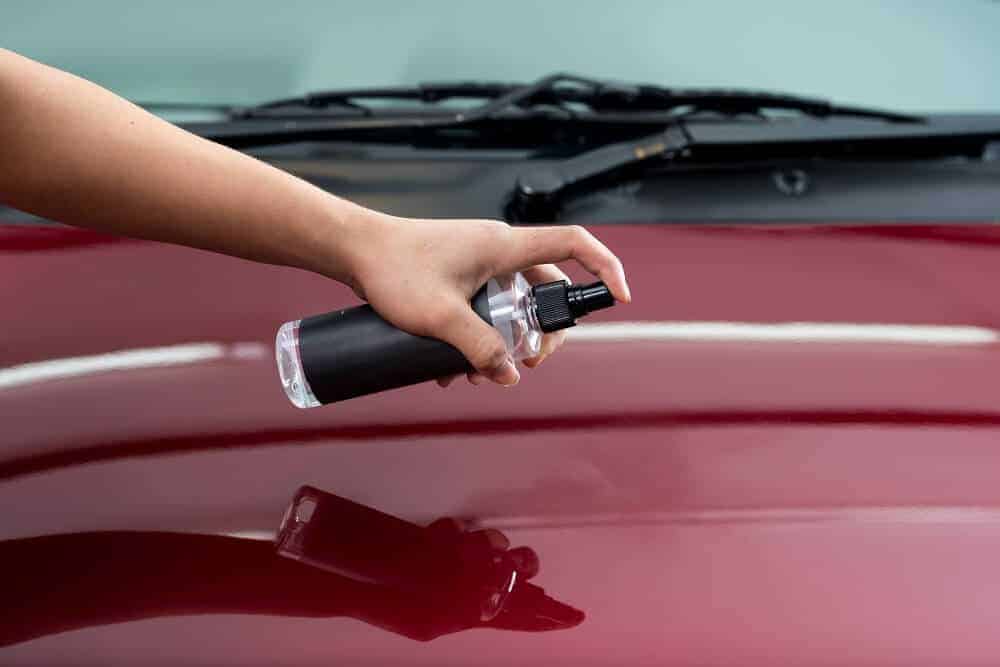
A new car always turns heads. But why is that? Is it the sleek design? Or it might be the shiny finish that catches our attention.At the same time, we often cringe at the sight of a car with faded paint. Please note that a car’s paint job is one of the first things people notice. Fresh paint can make a car look brand new, even a few years old. On the other hand, a faded paint job can make a vehicle look old and neglected.If you notice that your car’s paint job is not looking as fresh as it used to, it might be time to consider an auto paint restoration. This process can help restore your car’s paint job to its original condition, or even better!Car paint can fade for various reasons, including exposure to sunlight, pollutants, and extreme weather conditions. Over time, these factors can break down the paint molecules, causing the paint to lose colour and become dull. The following are reasons why you need auto paint restoration. Sunlight Did you know that sunlight can cause car paint to fade? That is right – the sun’s ultraviolet (UV) rays can damage the paint on your vehicle, causing it to fade.Sunlight can cause car paint to fade for several reasons:The sun’s ultraviolet (UV) rays can damage the paint, causing it to lose its lustre.Sunlight can cause the paint to become brittle, making it more susceptible to chips and scratches.Harsh sunlight causes the paint to fade in colour. To protect your car’s paint from the sun, park in a shady spot or use a car cover. Additionally, you can wax your car regularly to create a barrier between the paint and the sun’s rays. Air Pollution Air pollution can cause car paint to fade because the pollutants in the air can act as an abrasive, causing the paint to wear away. The most common type of air pollution is smog, a mixture of smoke and fog. Smog can be caused by several things, including factories, power plants, and car exhaust.Car paint is designed to withstand a certain amount of wear and tear, but it is not indestructible. Over time, the paint will start to fade if it is constantly exposed to air pollution. The best way to protect your car’s paint is to wash it regularly and wax it to create a barrier against pollutants. Salt It is no secret that salt can wreak havoc on your car. If you live in an area where salt is used on the roads to melt snow and ice, your vehicle will likely be covered in a white, powdery substance come winter. This substance is salt, and while it’s great for keeping the roads clear, it is not so great for your car’s paint job. Over time, salt can cause car paint to fade and even start to chip away. Conclusion There are a few reasons why car paint may fade over time. The most common cause is exposure to sunlight and other elements like rain, snow, and dirt. Other factors contributing to paint fading are using the wrong cleaning products, not waxing or polishing the paint regularly, and not storing the car in a garage. To restore your vehicle to its former glory, you should bring it to the nearest shop for an auto paint restoration.If you are looking for a garage that does top-notch auto paint restoration, you will not be disappointed if you hand in your vehicle to Lucky 13. We will restore your car to its former glory, so take your vehicle to us now!